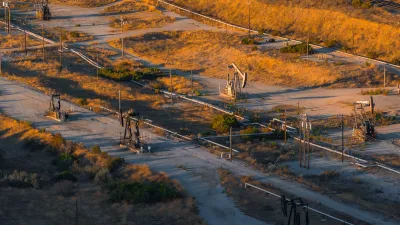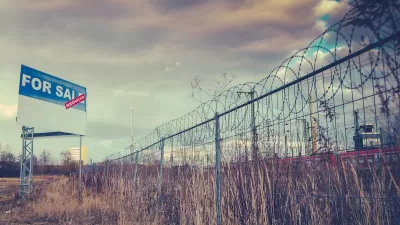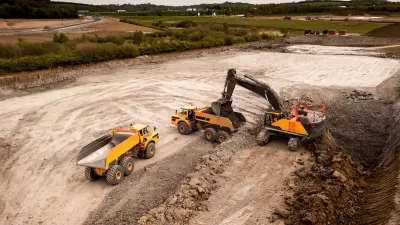Finding new uses for vacant gas stations is a major challenge throughout the U.S. The days of the small, independent service station are fading, yet they often occupy prime, gateway sites. Whether razed or transformed, challenges are formidable.
Commercial real estate reporter, Ronda Kaysen describes the challenges of finding new uses for closed gas stations. She focuses on the transformations of two closed stations in NY.
"More than 50,000 stations have closed since 1991 when there were nearly 200,000 nationwide, according to the National Association of Convenience Stores.
(C)onverting these sites can be challenging. They often are on small lots and may be contaminated by petroleum leaking from underground storage tanks, as was the case in High Falls (in the Hudson Valley).
Petroleum brownfields - ground contaminated or thought to be contaminated by fuel - make up half of the 450,000 brownfields in the country, according to the Environmental Protection Agency."
The High Falls station is being converted at a cost of $300,000 "into a yoga studio, wellness center and a charging station for electric cars (and) has turned the eyesore into a symbol of this struggling community's revival." Offices will be on a second story.
"But it is not always easy to persuade developers to invest in a property that may need costly environmental cleanup. The High Falls station cost the New York State Department of Environmental Conservation more than $100,000 to clean up in 2001."
The Long Island City (Queens) service station has undergone a $1 million transformation into the Breadbox Cafe, but it is part of a long-term plan to build a high rise building on it and a functioning Getty gas station adjacent to it.
"The main challenge is changing people's perception," said the restaurant's architect, Eran Chen, a principal at ODA-Architecture. "How do you create an attractive food space in a place that used to service cars?"
FULL STORY: A Clean New Life for Grimy Gas Stations

Study: Maui’s Plan to Convert Vacation Rentals to Long-Term Housing Could Cause Nearly $1 Billion Economic Loss
The plan would reduce visitor accommodation by 25,% resulting in 1,900 jobs lost.

Alabama: Trump Terminates Settlements for Black Communities Harmed By Raw Sewage
Trump deemed the landmark civil rights agreement “illegal DEI and environmental justice policy.”

Why Should We Subsidize Public Transportation?
Many public transit agencies face financial stress due to rising costs, declining fare revenue, and declining subsidies. Transit advocates must provide a strong business case for increasing public transit funding.

Paris Bike Boom Leads to Steep Drop in Air Pollution
The French city’s air quality has improved dramatically in the past 20 years, coinciding with a growth in cycling.

Why Housing Costs More to Build in California Than in Texas
Hard costs like labor and materials combined with ‘soft’ costs such as permitting make building in the San Francisco Bay Area almost three times as costly as in Texas cities.

San Diego County Sees a Rise in Urban Coyotes
San Diego County experiences a rise in urban coyotes, as sightings become prevalent throughout its urban neighbourhoods and surrounding areas.
Urban Design for Planners 1: Software Tools
This six-course series explores essential urban design concepts using open source software and equips planners with the tools they need to participate fully in the urban design process.
Planning for Universal Design
Learn the tools for implementing Universal Design in planning regulations.
Smith Gee Studio
Alamo Area Metropolitan Planning Organization
City of Santa Clarita
Institute for Housing and Urban Development Studies (IHS)
City of Grandview
Harvard GSD Executive Education
Toledo-Lucas County Plan Commissions
Salt Lake City
NYU Wagner Graduate School of Public Service





























